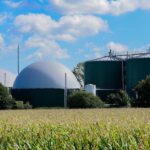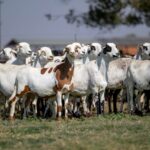Eastern Filbert Blight (EFB) is a serious fungal disease affecting hazelnut trees, particularly in the eastern United States. Caused by the pathogen Anisogramma anomala, this disease can lead to significant losses in yield and tree health if not managed properly. Early detection is crucial for effective management and to prevent widespread infection. Here are ten early signs to watch for:
1. Cankers on Twigs and Branches
One of the most noticeable early signs of EFB is the formation of dark, sunken cankers on young twigs and branches. These lesions often appear as dark brown or black areas and can cause dieback in affected parts of the tree.
2. Wilting Leaves
Infected trees may exhibit wilting leaves, especially in the spring and early summer. This wilting can occur due to the disruption of the tree’s vascular system caused by the cankers, leading to a lack of water and nutrient transport.
3. Premature Leaf Drop
Another indicator of EFB is the premature dropping of leaves. Infected trees may shed their leaves earlier than healthy trees, which can weaken the overall health of the tree and reduce its productivity.
4. Stunted Growth
Trees affected by Eastern Filbert Blight often show stunted growth. This can manifest as smaller leaves, shorter shoots, and an overall lack of vigor. Monitoring growth patterns can help identify potential issues early on.
5. Darkening of Foliage
The foliage of infected hazelnut trees may darken, showing signs of browning or discoloration. This change can be subtle at first but is often accompanied by other symptoms.
6. Dieback of New Growth
The tips of new shoots may die back, resulting in reduced overall growth. This dieback often occurs in the spring and can hinder the tree’s ability to produce nuts effectively.
7. Black Fungus on Cankers
As the disease progresses, a black fungus may appear on the surface of the cankers. This sporulating structure is a clear sign of infection and can help confirm the presence of EFB.
8. Increased Susceptibility to Other Pests
Infected hazelnut trees become more vulnerable to other pests and diseases. An increase in pest activity, such as aphids or scale insects, can be an early warning sign of underlying health issues related to EFB.
9. Reduced Nut Production
While not always visible until harvest time, reduced nut production can be an early indicator of EFB. Trees may produce fewer nuts or smaller-sized nuts, affecting overall yield.
10. Inconsistent Leaf Coloration
Look for inconsistencies in leaf color among the trees. Some leaves may appear healthy while others show signs of distress, such as yellowing or browning. This inconsistency can indicate the spread of EFB within the tree.
Recognizing the early signs of Eastern Filbert Blight is vital for the health of your hazelnut trees. Regular monitoring and prompt action can help manage the disease effectively. If you suspect that your hazelnuts are affected, it is essential to consult with a local agricultural extension office or a plant pathologist for advice on disease management strategies, including pruning, chemical treatments, and resistant cultivars. Early intervention can make a significant difference in preserving the health and productivity of your hazelnut orchard.
Join 'Farmers Mag' WhatsApp Channel
Get the latest Farming news and tips delivered straight to your WhatsApp
CLICK HERE TO JOIN






